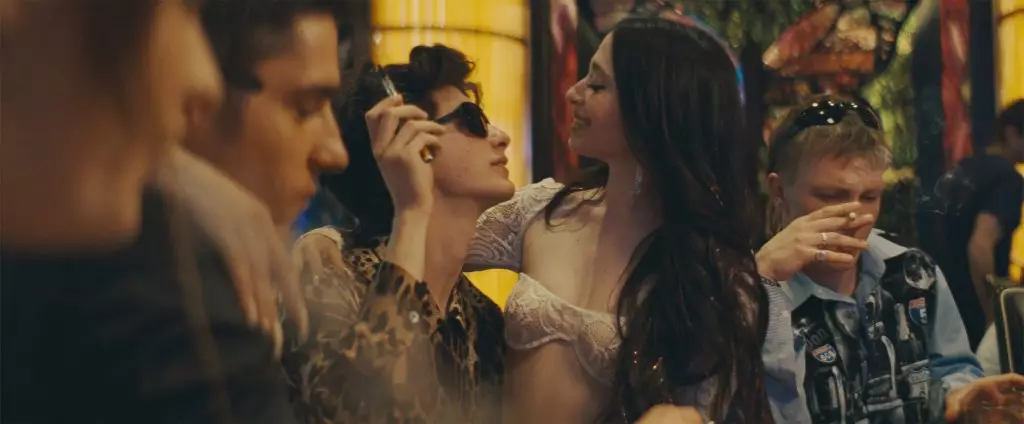This past weekend marked a significant moment for independent cinema, as it saw impressive box office performances from two films: “Anora” and “We Live In Time.” Indie films often struggle to garner attention in the mainstream media landscape, yet these recent entries have managed not only to capture critical acclaim but also to drive substantial revenue. “Anora,” directed by the talented Sean Baker, achieved a remarkable per-screen average (PSA) of $90,000 from just six locations, resulting in a total gross of $540,000. Such performance underscores the current trend of indie films resonating strongly with audiences eager for authentic storytelling and unique narratives.
Sean Baker, known for his previous successes like “The Florida Project,” has cultivated a reputation for his ability to tap into the emotional and social fabric of contemporary life. “Anora,” a modern twist on the Cinderella story, stars the captivating Mikey Madison as Ani, a Brooklyn-based sex worker whose impulsive marriage to a Russian billionaire’s son sends her life into chaos. Critics and audiences alike have lauded Madison’s performance, contributing to the film’s superb 98% rating on Rotten Tomatoes. The film’s strong critical reception is critical in today’s saturated market, where audiences are increasingly selective about where they invest their time and money.
Neon, the film’s distributor, expressed excitement over the record-breaking success, marking this as another feather in its cap following a string of awards-season triumphs. The PSA of $90,000 is currently the highest of 2024, eclipsing the previous record held by “Kinds of Kindness.” By collecting such numbers, “Anora” aligns itself with other cinematic heavyweights like “Parasite” and “Asteroid City,” indicating that it could potentially follow a similar path into mainstream conversation.
On the other end of the indie spectrum, “We Live In Time,” directed by John Crowley and featuring stars Andrew Garfield and Florence Pugh, has made waves with its compelling narrative centered around love and relationships. In its second week, the film grossed $4.2 million across 956 screens, coasting to a cumulative total of $4.5 million. This film stood out as the best platform expansion of the year, implying that audiences are hungry for engaging romance narratives that resonate on a personal level.
What’s particularly noteworthy is the demographic interest in “We Live In Time.” Exit polls indicate that a staggering 85% of its audience comprises individuals under 35, with women making up 70% of that viewership. This demographic data suggests that contemporary love stories, grounded in realism and emotional depth, appeal significantly to younger audiences. The positive word-of-mouth and heightened engagement with stars like Garfield and Pugh indicate likely longevity for the film’s run in theaters.
As “Anora” and “We Live In Time” flourish, other newcomers are also making their attempt to weather the storm of release competition. For example, “Goodrich,” starring Michael Keaton, experienced a respectable box office reception with $650,200 across approximately 1,000 screens. Directed by Hallie Meyers-Shyer, the film explores modern parenthood, offering a comedic yet heartfelt portrayal that complements the current trend of personal narratives in indie cinema.
While the box office may report these numbers, one cannot overlook the inherent challenges that less recognized films like “Rumors” and “Exhibiting Forgiveness” face. Both films have received modest forecasts but are navigating the crowded landscape of new releases while trying to carve out a specific audience niche.
The box office performances of both “Anora” and “We Live In Time” demonstrate the resilience of independent films in a marketplace increasingly dominated by blockbusters. These artworks, fueled by unique narratives and compelling performances, have not only generated revenue but also garnered critical acclaim that can lead to potential awards. As audiences continue to seek diverse and realistic storytelling, indie films are finding their moment, proving that distinct voices can thrive even amidst the noise of mainstream cinema.
As the industry moves further into the fall season, staying aware of audience preferences and emerging trends is vital for new releases. Both filmmakers and distributors now have an opportunity to harness this momentum and engage with viewers who are eager for authentic cinematic experiences. With the successful weekend behind them, it will be illuminating to see how these films evolve in audience perception and box office standing in the weeks to come.


Leave a Reply